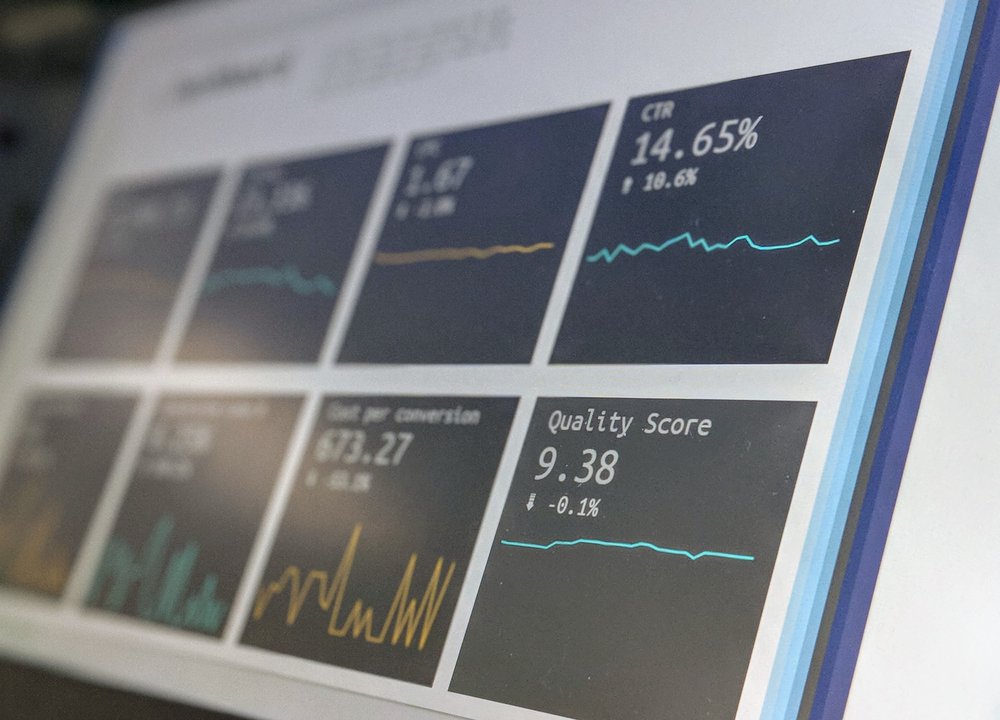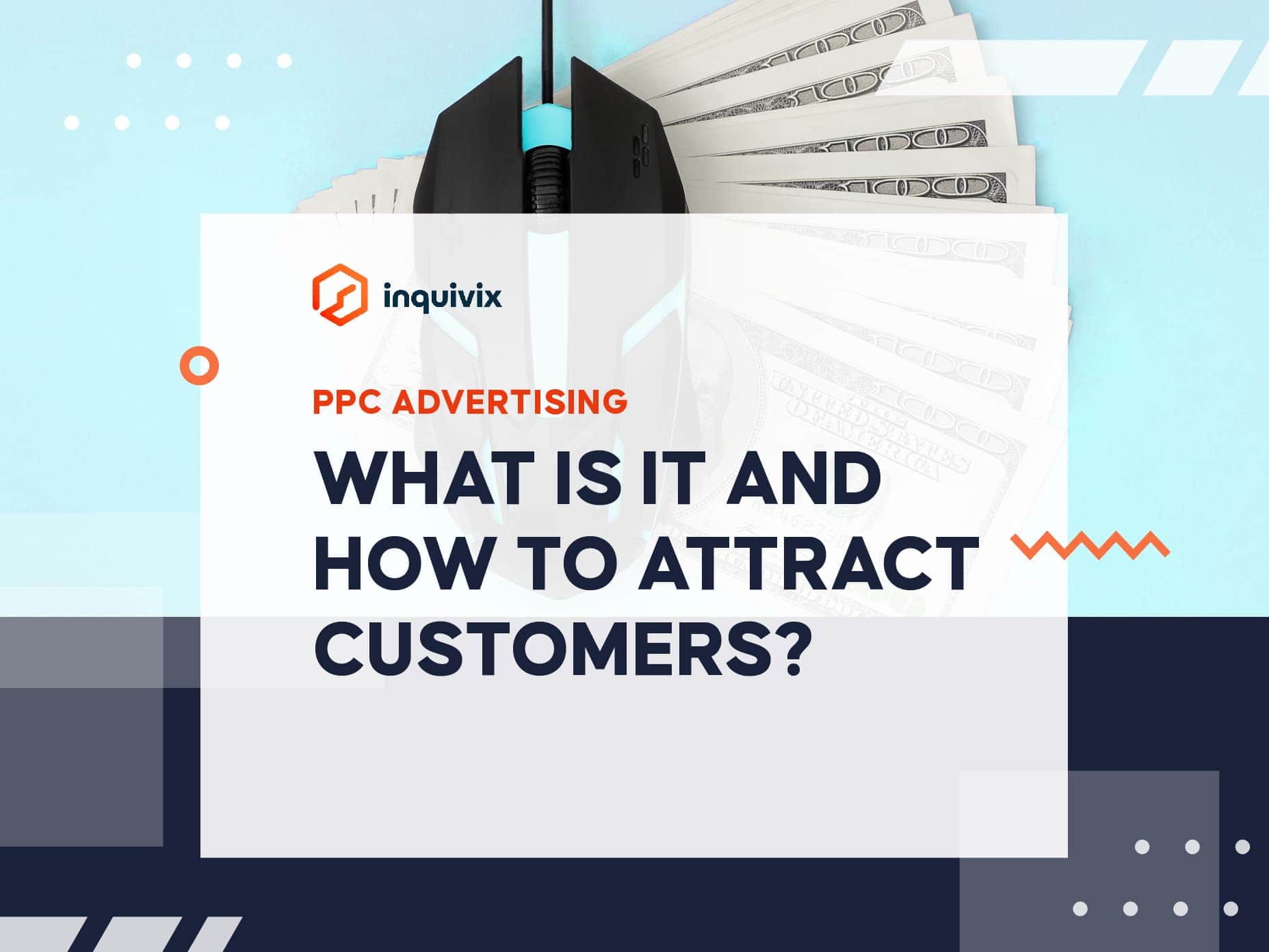Inquivix HQ
1-903, 18 Eonju-ro 146-gil,
Gangnam-gu, Seoul, Korea
06057
What is PPC Advertising? – There are so many different kinds of marketing. It may not occur to you that simply clicking on a word or a link would be a profitable marketing tactic. These various tactics are as simple as creating a search in Google and clicking on the links that follow. May it be an advertisement on Facebook or Pinterest. You’ll click on the advertisement which then leads you to your desired content. Either way, this form of advertising is a multi-million dollar industry that is growing larger by the click.
What is PPC Advertising and How Does it Work?

PPC is an acronym for “Pay per Click” or, “cost per click”. Advertising agencies work closely with customers to get their advertisements on various platforms such as Google, Pinterest, Bing, Yahoo, etc. When those advertisements get clicked on from whichever engine they were seen, the advertising agency, as well as the search engine, get paid for each time a customer clicks on the advertisement.
When looking at the various platforms that advertisers use, the big ones such as Google and Yahoo are reigning in at the top performers. An article by Cheq reported that Google holds 78% of the PPC global ad market. Further, Google itself can reach over 3.5 billion searches every single day. With this said, there is great importance in researching which advertisement module to filter through that would best serve the needs of the customer.
How Much Revenue Comes from PPC Advertising?

According to Social Media Today, PPC advertising in 2017 was $10.1 billion, which was comprised of 7 million different advertisers. Furthermore, the search engine Google and the social media platform Facebook are the leading spenders in the world of PPC advertising.
In fact, according to the same source, Facebook received over $23 billion in revenues from their ad service and spent only half as much.
What happens though when ad blockers are used? While this doesn’t seem like a big deal now, the projected percentile for ad blockers stands to increase even more so than it has in the last few years. Statistica reports that are in the year 2014 15.7% of internet users used advertisement blockers.
Moreover, at the end of 2019, the number increased to 25.8% of internet users were using ad blockers. This number is projected to increase to 27% by the end of 2021. If you are someone looking to get into the business of PPC advertising it would be extremely important for you to consider that roughly a quarter of your advertising that’s paid for will never reach its intended audience.
On the other hand, it is uplifting to learn that even though ad blocking is becoming more and more prevalent. The revenue that is being gained from PPC advertising stays consistently encouraging.
Another element to consider before figuring out the “how-to” of getting clients is to also look at who the main portion of the clients is in the first place. A study by Clutch in 2017 reported PPC advertising influenced 81% of millennials to make a purchase. Only 57% of baby boomers or older.
Additionally, out of the 1,030 consumers involved with this survey Clutch, they found that advertisements (T.V., print, PPC, or otherwise) influenced over 90% of them to actually purchase something.
PPC Search Advertisement Statistics

Information regarding PPC statistics is really and truly absolutely astounding. There is so much that can be delved into and evaluated when considering your own PPC advertising plan and considering the best methods to gather customers. For example, as prevalent as the internet is, according to Clutch, television advertisements still dominate the world of advertisement-to-purchase statistics.
Clutch reported that while the internet is certainly dominating our society, advertising through more traditional mediums is seen as more trustworthy. For example, 61% of consumers trust television ads versus only 41% on the internet or 38% in trusting social media. Considering the prevalence of social media in today’s society this particular statistic may seem very surprising. Especially considering that millennials are the main portion of the population at this point.
READ MORE:
Your Ad Management Team And Maximizing Facebook Business Manager
The 7 Best Tips To Boost Your Sales On Instagram
Korea’s Top Two Paid Search Giants: Google And Naver
SEO vs. PPC
An SEO is also known as Search Engine Optimization. It is a free but not so easy way of getting information out into the open. Search engine optimization results happen when a consumer searches on the internet. Also, a complex algorithm yield results that best match the search.
For example, if you were to go on Google and search for details on the newest cell phone products you would be led to a series of links. Then, you click on the first link that pops up which brings you to a website filled with ads of different cell phones that are “the newest cell phone”. PPC advertising will appear first. Why? Because this is paid for advertising. The advertisements at the bottom are likely going to be organic searches or SEO.
Cost Difference Between SEO and PPC
They are many benefits to SEO advertising, for example, the cost is less than PPC advertising. When the organic search yields free results why pay more for PPC advertising?
The reason why many advertisers chose to go with a PPC is simply that there is more prominence as to where the advertisement is placed on a webpage. Moreover, PPC advertising truly offers laser-focused advertising that ultimately generates more revenue for the companies paying for where and how they want their product to appear.
Overall, the twosome perks make each appealing in their own way. SEOs provide low-cost or free results (organic results) which in the end are more cost-effective than a PPC. Because the cost is lower or at no cost at all the advertising itself is more sustainable.
Those search results do not simply disappear because there is no longer funding coming in for them. The PPC allows the advertiser to have substantially more say in how the advertisement appears on a search. For example, there is more control over the visuals (font, colors, placement, etc.) that is not available with an SEO.
While the SEO is sustainable, it is very reasonable cost-wise to budget out a PPC. Many different companies have package-type deals. There will be an advertiser who can establish a (daily, weekly, monthly) budget on advertising needs and customize the results.
How to Get Customers with PPC
Now we have a good chunk of information regarding PPC advertising versus the other option of SEO, various PPC statistics, and other important factors. It is time to figure out how to get the customers. Below we have compiled the most essential PPC information to help you gather customers through your PPC advertisements. Don’t be afraid to put in a little hard work, because that is exactly what it is going to take.
1 . Brainstorming
Before you start randomly placing ads in different places or creating accounts, think about where you see ads the most. Do you see ads on social media? What about clickable ads on Google? Next, consider the types of words you type into a search engine to bring about something that you are looking for.
For example, when you search for “fuzzy turtleneck sweater” on Google, you would expect to see ads with pictures of fuzzy turtleneck sweaters appearing from multiple retailers as a result. Or, on Pinterest, if you were to try to find a “DIY farmhouse table”, you might expect to find ads from different blogs for plans and stores for materials. Either way, those target words are what you need to bring about the virtual audience you need.
2. Search, Display, and Social Media Ads
Whenever trying to decide what type of ad you want to place you need to decide whether you want to place a search or display the ad. Further, you need to consider where your customer may be in the marketing funnel.
Consider when you go onto Google and you need something immediately. Consumers who are clicking on ads as a result of a search area in the marketing funnel stage of consideration. For example, your electricity just went out and you don’t know why I need a plumber immediately. This is where the search ad comes into play. Whenever you go onto Google and you search for electricians near you, the first thing that is going to pop up, is in fact, electricians that are near you. Search ads quickly and efficiently point a consumer in the direction they are wanting to go.
Display ad consumers begin at the top of the funnel. Because they are just being made aware of the product. These types of ads can appear as banners or placeholders on certain websites. For example, a news channel website might display a PPC ad for a local furniture website or to a boutique. Either way, those advertisers paid to have their ad placed on a particular website.
Social media marketing is cheaper than other types of marketing. It allows the advertiser to have a say in where the ad is placed. There is also the perk of ad blockers not having a chance to keep yours from being seen. More so, social media is a continually growing business that reaches so many different demographics of people.
3 . Best PPC Platforms
Once you have the type of PPC ad in mind, figure out what platform is best for your advertisement that aligns with who you are trying to reach. According to CHEQ some of the biggest platforms for PPC advertising are likely ones that you have heard of or used at least five times in the last day.
Platforms that make the list are such as Google, Linked In, AdRoll, Twitter, Yahoo, Instagram, Facebook, etc. Take some time to think about your budget. Look at your budget and work backward. Again, think about which of these platforms is best to reach the desired demographic. Then, do your shopping and get the most bang for your buck.
4 . What is the Parameters
Your parameters are essentially setting the limits or guides for narrowing your target audience. Primarily you want to think about what kind of audience you are wanting to reach. Who is your demographic?
The answer to this question will likely dictate what platforms your ad should be seen on. Next, consider how you want to measure the success of your ad. Will success be measured by how many visitors reach your website through the PPC ad? Maybe success will be measured by overall growth in revenue.
5. The Landing Page
Your landing page is just as important as all of these other factors that are playing a part in successful PPC advertisements. A dedicated landing page should be a solid and well-designed webpage where your visitors “land” after clicking on that PPC ad. According to Unbounce, the best landing sites have strong contextual images, headlines and sublines, clear buttons, clear features of the offer, and possibly positive reviews from verified customers.
Make sure your PPC advertisement takes the consumer to exactly where you need them to be and accurately takes the consumer to your advertisement. Many ads will take someone to a landing page, but that PPC ad is nowhere to be found. Overall, simply make sure your landing page and ad match up.
Final Thoughts
When it comes to building your own customers for PPC revenue there is simply no easy road. There is a lot of research that must be done. Some of them are determination, planning, and grit that go into creating a successful business.
There is strategy, much like a game of chess, when it comes to making different moves. Knowing all the facts about PPC versus other forms of marketing and different ways of building your PPC advertisement campaigns will ensure success.


